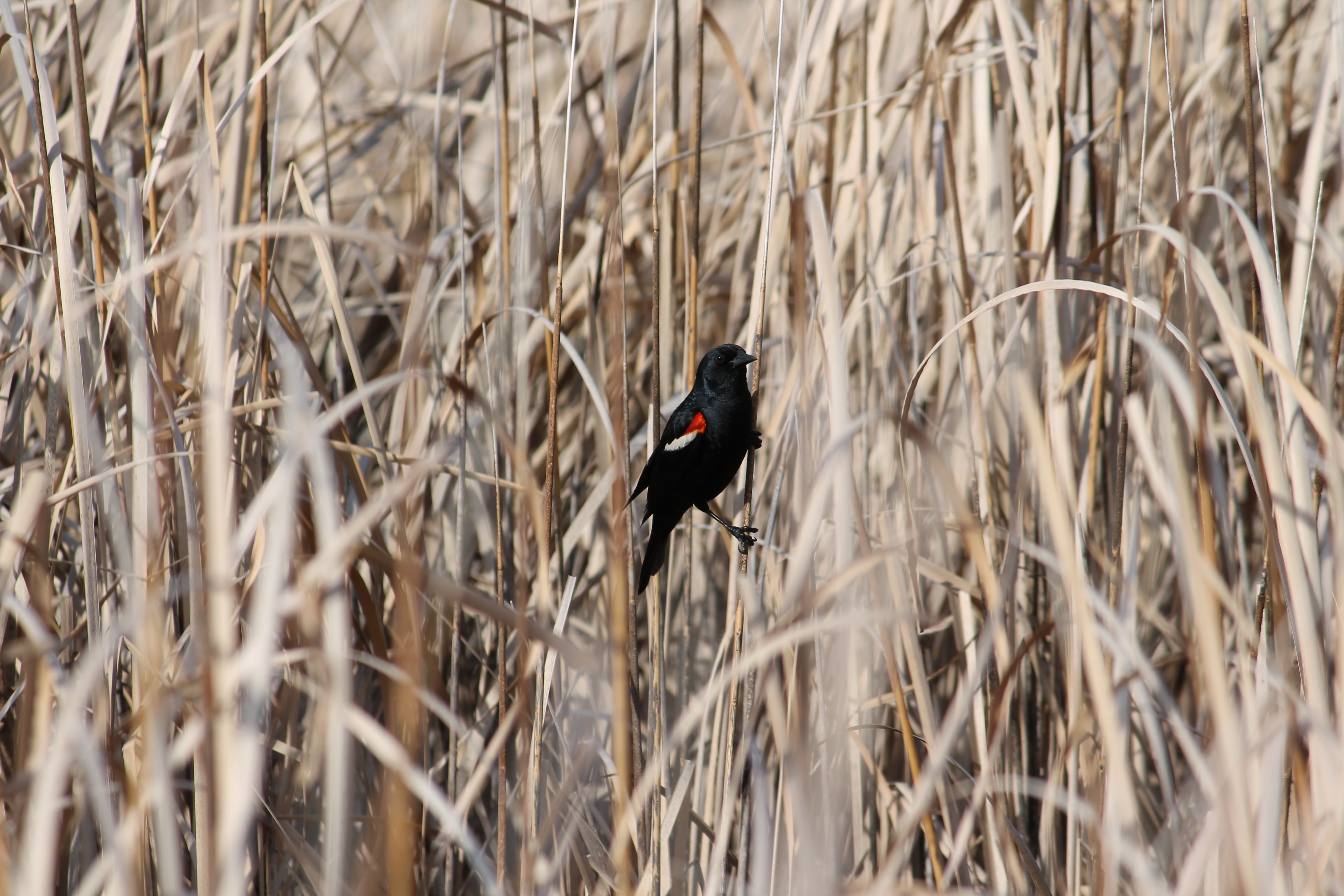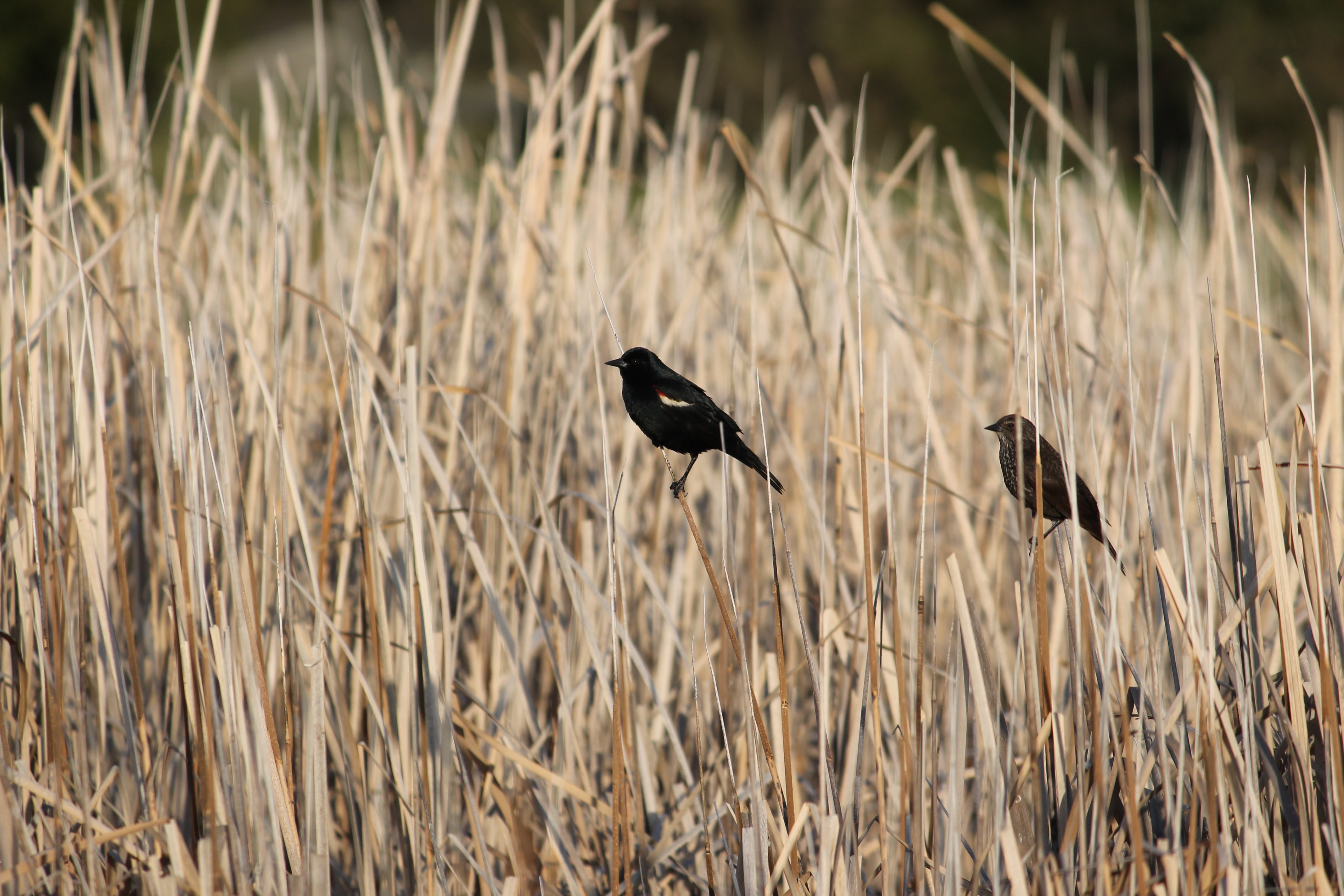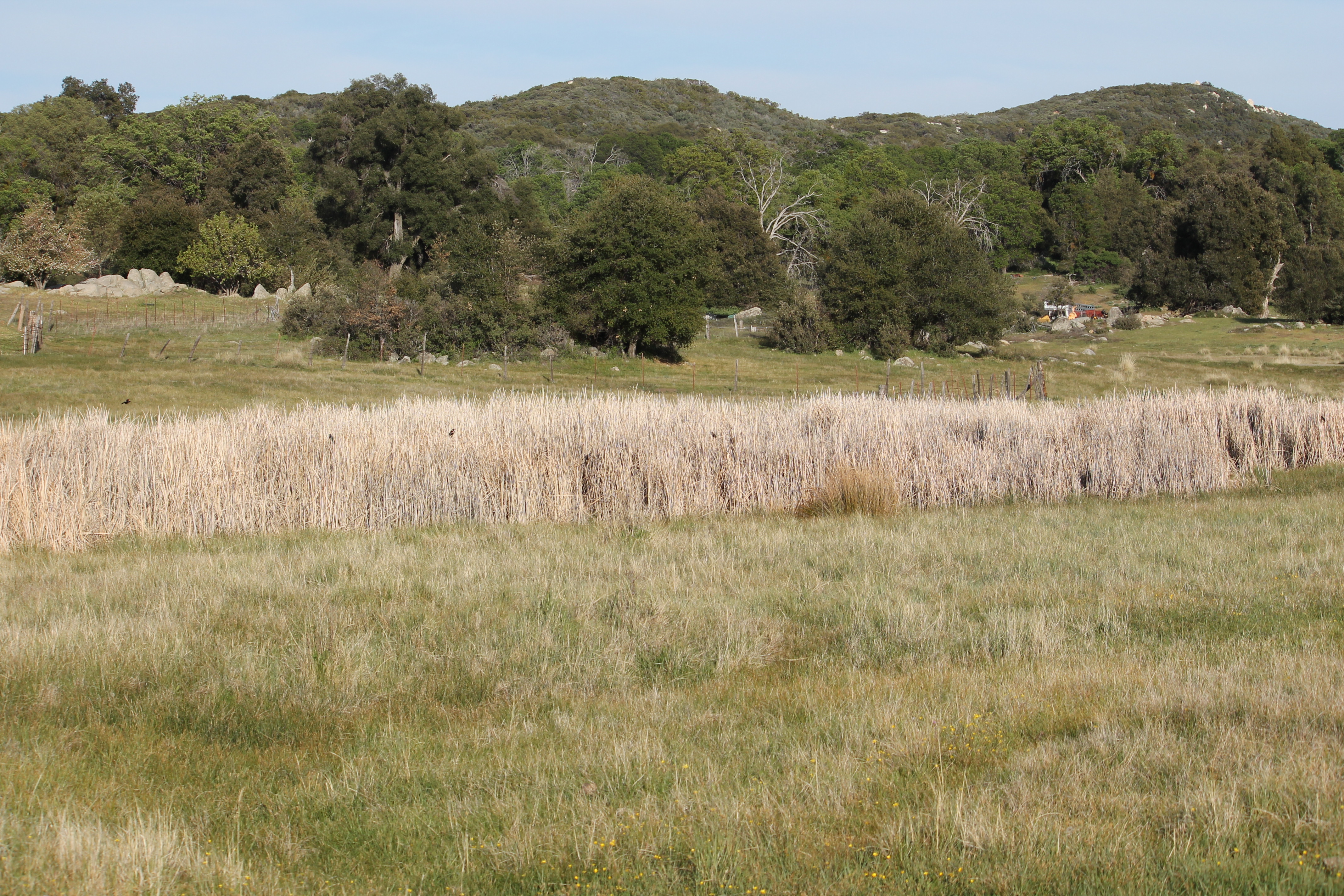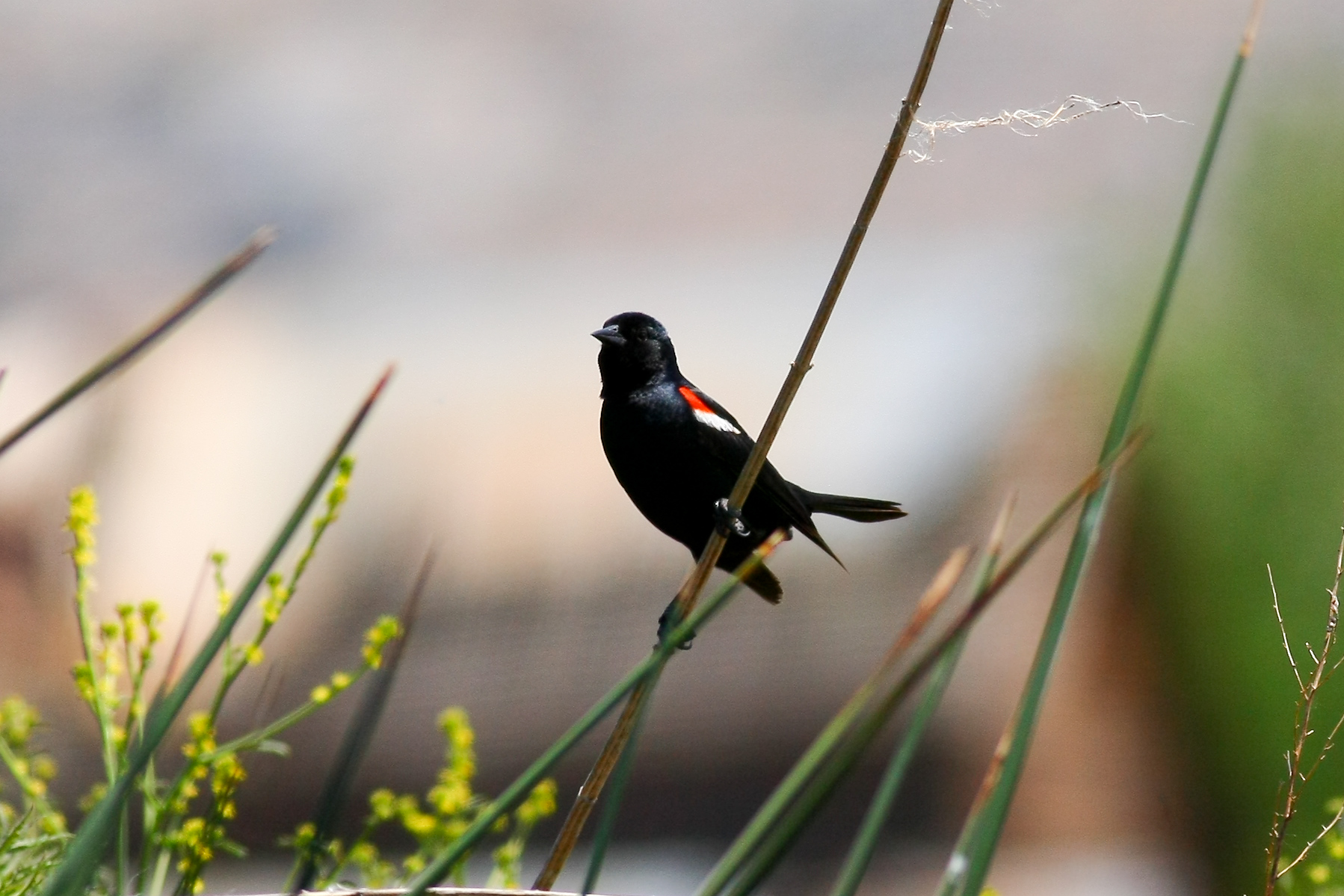Current Distribution Rangewide
Native to California. Small nesting colonies found in Oregon, Washington, Nevada, and coastal Baja California [1;2]. Common throughout Central Valley and in coastal districts from Sonoma County south [3]. Winter in San Francisco Bay Delta, along central California coast, San Joaquin Valley, and southern California [4].
Known Populations in San Diego County
Concentrated in two areas: north-central San Diego county from Dameron Valley and Oak Grove south to Ramona and Santa Ysabel, and the Campo Plateau from Potrero to Jacumba. In mid 1800s, one of most abundant bird species near San Diego, this species has declined significantly to a small portion of former range in the County [5].
List Status
SSC, Currently in evaluation process of State and Federal listing of Threatened and/or Endangered
Habitat Affinities
Most nesting colonies are in cattail marshes but may also be in blackberry thickets or stands of black mustard [5]. Basic requirements for breeding sites are open accessible water, a secure substrate for nesting that may include flooded or thorny or spiny vegetation, and suitable nearby foraging areas that provide adequate food sources within a few kilometers of the nesting colony [6, cited from 1]. During winter, they are associated with open rangeland. Found in lowland areas, typically less than 1000 m elevation. Open water within 500 m is a requirement for colony settlement [7]. Form “mega-colonies†in grain fields (silage), usually associated with dairy farms [1;8;9].
Taxonomy and Genetics
Diverged over 3 million years ago from its nearest relative and most common bird in North America, the Red-winged Blackbird (Agelaius phoeniceus) [10 cited from 8]. Differs from Red-Winged Blackbird because of breeding ecology; tricolored blackbirds are colonial while red-winged blackbirds defend individual territories [11].
Seasonal Activity
Flocks are nomadic during fall when seeking food [5].
Life History/Reproduction
Colonial species [1;11;12] with polygynous mating system [3;8;13]. Breeding season mid-April into late July; Clutch size usually 3-4 eggs, range 2-6 [12;13 cited from both 3;14] . Nest building takes approximately 4 days with egg laying occurring as early as 2 days after nest initiation [15 cited from 11]. One egg laid per day; Incubation lasts about 11 days; altricial young tended by female or by both parents [3;7;15 and 16 cited from 11]. Young leave nest at about 13 days [3]. May nest 2 or more times per year [11].
Diet and Foraging
Most important prey for adults provisioning nestlings include: Coleopterans (beetles), Orthopterans (grasshoppers, locusts), Hemipterans (true bugs), other larval insects, and Arachnids. Ideal foraging conditions are created when shallow flood irrigation, mowing, or grazing keeps the vegetation at optimal height (<15 cm) [1;8]. Animal matter makes up 91% of the food volume of nestlings and fledglings, 56% of the food volume of adult females, and 28% of the food volume of adult males [17]. Seed and cultivated grains are other major foods composing most of fall and winter diet. Forages on ground [3]. During breeding season, forages in nearby grassland, pastures, or agricultural fields; also forages readily in artificial habitats such as dairies, lawns, garbage dumps, and parking lots in nonbreeding season [5].
Dispersal
Year round resident in many areas but also move throughout the valleys and foothills of cismontane California and southern Oregon during breeding season [4]. Wintering populations move extensively throughout their range during the nonbreeding season [1]. In San Diego County, most of the population does not shift a great distance [5].
Threats
Primary threats include: direct loss and degradation of breeding and foraging habitats resulting from water diversions, large-scale agricultural and urban land conversions; nest predation; and loss of nests in silage due to the timing of harvests [1;8].
Literature Sources
[1] Beedy, E. C. 2008. Tricolored Blackbird. In California Bird Species of Special Concern, W. D. Shuford and T. Gardali, 437-443. Western Field Ornithologists, Camarillo, CA and California Department of Fish and Game, Sacramento, CA.
[2] Berg, E.C., J.P. Pollinger, and T.B. Smith. 2015. Population structure of the Tricolored Blackbird (Agelaius tricolor) in California: are northern and southern populations genetically distinct?. Report prepared for the California Department of Fish and Game, sacramento, California, and Audubon California, Emeryville, California.
[3] Granholm, S. Tricolored Blackbird. upd. 2008. Zeiner, D.C., W.F.Laudenslayer, Jr., K.E. Mayer, and M. White, eds. 1988-1990. California's Wildlife. Vol. I-III. California Department of Fish and Game, Sacramento, California.
[4] Hamilton III, W. J. 1998. Tricolored Blackbird itinerant breeding in California. Condor: 218-226.
[5] Unitt, P. 2004. San Diego County Bird atlas. Proc. San
Diego Soc. Nat Hist. 39.
[6] Beedy, E.C. and W. J. Hamilton III. 1999. Tricolored Blackbird: Agelaius Tricolor. Birds of North America, Inc.
[7] Hamilton, W. J. 2004. Tricolored Blackbird (Agelaius tricolor). In The Riparian Bird Conservation Plan:a strategy for reversing the decline of riparian-associated birds in California. California Partners in Flight. Available from http://www.prbo.org/calpif/htmldocs/riparian_v-2.html. Accessed October 20, 2016.
[8] Tricolored Blackbird Working Group. 2009. Conservation Plan for the Tricolored Blackbird (Agelaius tricolor) 2.0 Update. Susan Kester (ed.) Sustainable Conservation. San Francisco, CA.
[9] Kelsey, R. 2008. Results of the Tricolored Blackbird 2008 Census. Audubon California.
[10] Yasukawa, K. and W. A. Searcy. 1995. Red-winged blackbird (Agelaius phoeniceus). In A. Poole and F. Gill (eds.), The Birds of North America, No. 184. Philadelphia, PA: Academy of Natural Sciences and Washington, DC: American Ornithologists Union.
[11] East Contra Costa County HCP/NCCP. 2006. Tricolored Blackbird Species Account.
[12] Campbell, K. F. Tricolored Blackbird:Agelaius tricolor. Pepared for the Bureau of Land Manangement.
[13] Terres, J. K. 1980. Audubon Society Encyclopedia of North American Birds. Knopf; Distributed by Random House.
[14] Solano County Water Agency. 2012. Tricolored Blackbird Species Account. Public Draft Solano HCP
[15] Payne, R.B. 1969. Breeding seasons and reproductive physiology of tricolored blackbirds and redwinged blackbirds. University of California Press.
[16] Hamilton III, W. J., L. Cook, and R. Grey. 1995. Tricolored blackbird project 1994. Report prepared for the US Fish and Wildlife Service, Portland, Oregon, and California Department of Fish and Game, Sacramento, California.
[17] Skorupa, J. P., R. L. Hothem, and R. W. Dehaven. 1980. Foods of breeding tricolored blackbirds in agricultural areas of Merced County, California. The Condor82 (4): 465-467.



